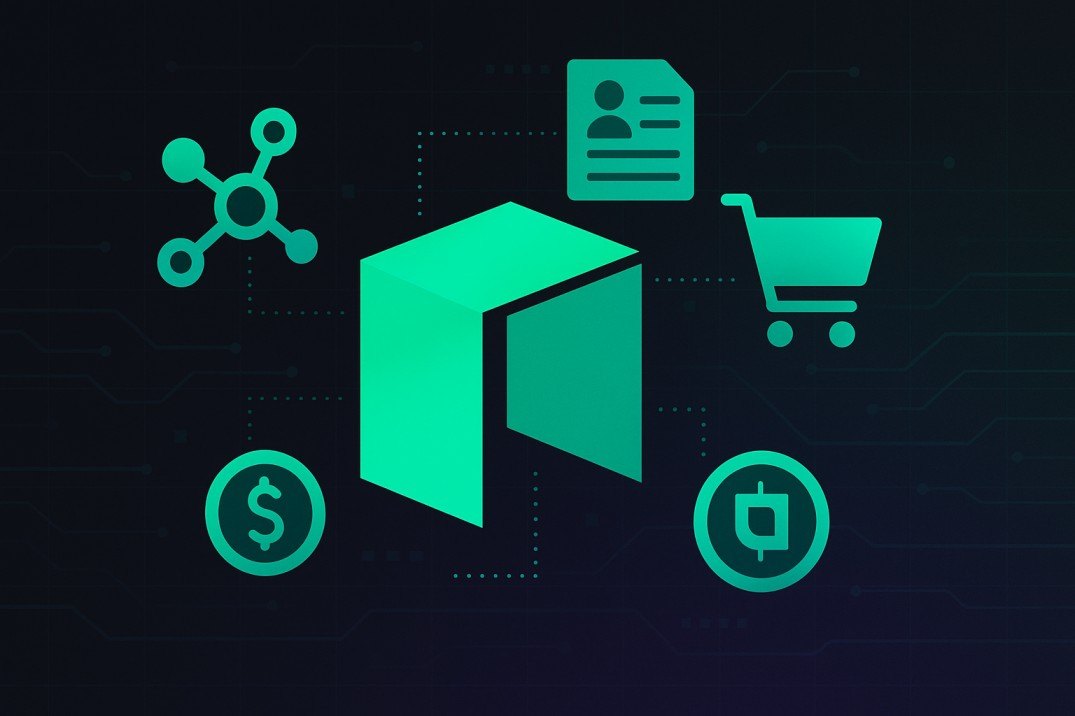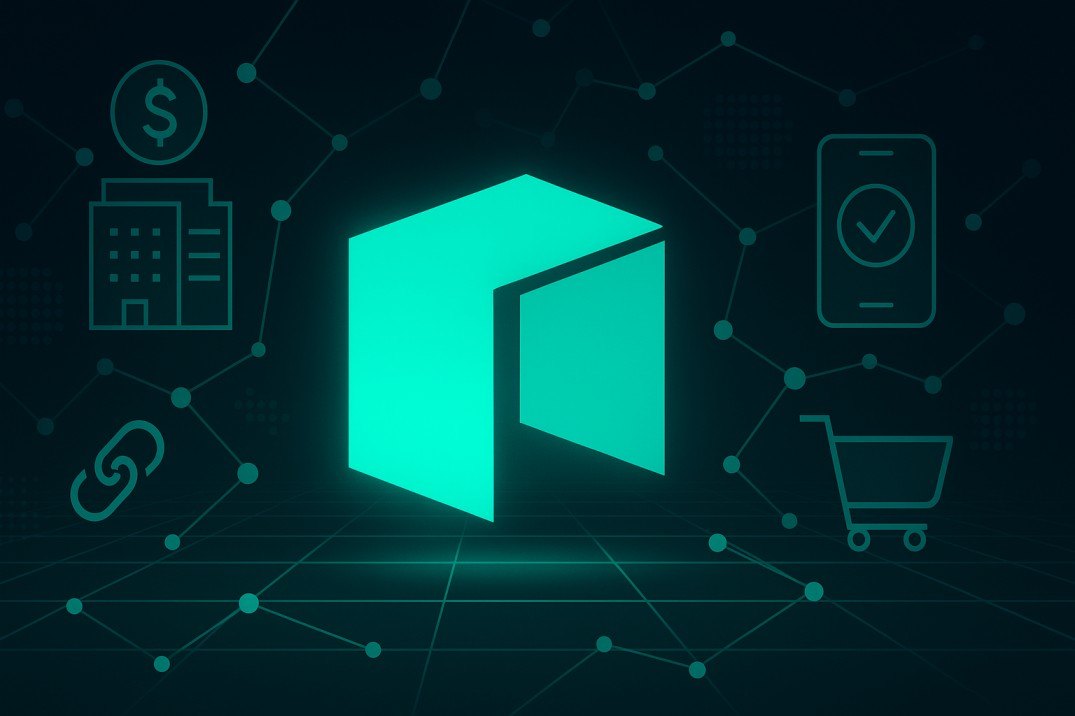TL;DR
- Neo (NEO) is an open-source blockchain platform often referred to as "China's Ethereum", aiming to create a smart economy by integrating digital assets, digital identity, and smart contracts.
- Originally launched in 2014 as Antshares, Neo became China's first public blockchain before rebranding in 2017.
- High throughput with thousands of TPS possible
- Continuous upgrades like Neo 3.0 for scalability and security
- EcoBoost initiative (launched in 2019) provides grants, technical support, and funding for developers.
- Consensus: dBFT, similar to Delegated Proof-of-Stake, where elected delegates validate transactions with two-thirds consensus required.
- Challenges: Competing with Ethereum and other L1 blockchains, adoption beyond China, and attracting global developers.
- Vision: To power the next generation internet (Web3) and digital economy where payments, identities, and assets coexist seamlessly.
In the fast-moving world of blockchain, a handful of projects stand out as pioneers. Among them is Neo (NEO), a blockchain often described as the Chinese equivalent of Ethereum. But beyond the comparisons, Neo carries its own vision: a "smart economy" where digital assets, digital identities, and smart contracts seamlessly integrate.
Neo was first introduced as Antshares in 2014, making it China's first-ever public blockchain. Three years later, it rebranded to Neo, symbolizing a rebirth and renewed ambition for global recognition. Let's dive deeper into how Neo works, what makes it unique, and why it remains one of the most important blockchain platforms in Asia and beyond.
Origins and Founders
Neo was founded by Da Hongfei and Erik Zhang.
- Da Hongfei: A visionary entrepreneur who believed the internet, while revolutionary, failed to give individuals control over their data. He saw blockchain as the foundation for a new, trustless internet.
- Erik Zhang: Core developer and the author of Delegated Byzantine Fault Tolerance (dBFT), the consensus mechanism that underpins Neo. Zhang has played a critical role in developing Neo 3.0, a major upgrade designed for scalability and security.
Together, they also established the Neo Foundation, which continues to fund development, adoption, and ecosystem growth.
Neo's Vision: The Smart Economy
Neo is envisions an integrated digital economy made up of three key pillars:
- Digital Assets - On Neo, users can register, trade, and circulate a wide variety of assets. Ownership is secured by blockchain immutability and legally backed by digital identity.
- Digital Identity - Individuals, organizations, and entities can have verifiable digital identities, enabling trust and compliance.
- Smart Contracts - Automated programs that execute transactions or agreements without intermediaries, supporting complex decentralized applications (dApps).
This "Smart Economy" framework allows Neo to combine legal trust (through identity systems) with technical trust (via blockchain).
Key Features of Neo

1. Dual Token System: NEO and GAS
Unlike most blockchains, Neo uses two tokens:
- NEO: The governance and investment token. Holders can vote on protocol decisions and improvements.
- GAS: The utility token used to pay for transactions, deploy smart contracts, and interact with the network.
This separation ensures that governance and utility are not bundled into a single token, helping manage demand and network costs more efficiently.
2. Multi-Language Smart Contracts
Neo supports development in multiple programming languages, including C#, Python, Java, Go, and TypeScript. This makes it more accessible than Ethereum, where developers must use Solidity. This approach lowers entry barriers for global developers, encouraging adoption.
3. High Performance and Scalability
Neo's Delegated Byzantine Fault Tolerance (dBFT) enables thousands of transactions per second (TPS), with low energy consumption compared to Proof-of-Work systems. This makes Neo suitable for enterprise-scale applications, financial platforms, and high-demand use cases.
4. Neo 3.0 Upgrade
Launched as a major milestone, Neo 3.0 improves scalability, security, and modularity. It also enhances interoperability with other blockchains, ensuring that Neo remains relevant in a multi-chain world.
5. EcoBoost Initiative
Introduced in 2019, Neo EcoBoost provides full life-cycle support for promising projects. This includes:
- Developer grants
- Technical support
- Marketing and promotional assistance
By nurturing projects from idea to execution, Neo has positioned itself as not just a platform, but also an ecosystem builder.
Consensus: Delegated Byzantine Fault Tolerance (dBFT)
Neo's consensus mechanism is Delegated Byzantine Fault Tolerance (dBFT), which was authored by Erik Zhang.
Here's how it works:
- Delegation - Token holders vote for delegates, known as "consensus nodes."
- Block Proposal - A node proposes a block.
- Validation - Two-thirds of consensus nodes must agree on the block.
- Finality - Once approved, the block is final and cannot be reversed.
This system ensures:
- High throughput (thousands of TPS).
- Energy efficiency (no mining required).
- Security against bad actors (must control two-thirds to attack).
According to Neo, The dBFT mechanism ensures fast transaction finality and reduces the risk of forks, making it enterprise-ready.
Tokenomics and Use Cases of Neo

Neo uses a two-token model:
NEO:
- Fixed supply of 100 million tokens.
- Cannot be divided (smallest unit = 1 NEO).
- Used for governance (voting on upgrades, protocol parameters).
GAS:
- Generated through holding NEO.
- Divisible token used for network fees.
- Designed as the "fuel" of the Neo blockchain.
This dual system ensures separation between ownership/governance and utility/fees, making the system more balanced.
Use Cases of Neo
- Decentralized Finance (DeFi) - Platforms for lending, trading, and asset management.
- Digital Identity Systems - Secure, verifiable identities for individuals and institutions.
- Tokenized Assets - Real-world assets like property or stocks represented on-chain.
- Gaming and NFTs - In-game economies and collectibles powered by Neo smart contracts.
- Enterprise Applications - Businesses using Neo for compliance-friendly blockchain integration.
Challenges and Risks
Like any blockchain, Neo faces several challenges:
- Competition - Ethereum dominates the smart contract space, while Solana, Polkadot, and Avalanche compete on scalability.
- Geopolitical Perception - Being labeled as "China's Ethereum" can be both an advantage and a limitation for global adoption.
- Developer Adoption - Despite multi-language support, Neo's ecosystem is smaller compared to Ethereum.
- Regulatory Pressures - As a project with roots in China, regulatory uncertainty could affect growth.
Why Neo Matters
Neo represents one of the earliest visions of a smart economy - years before Web3 became a popular term. By combining digital identity, digital assets, and smart contracts, Neo is tackling some of the hardest problems in blockchain: trust, compliance, and scalability.
With continuous development, strong leadership, and its unique dual-token system, Neo remains a cornerstone project in the blockchain world.
Conclusion
Neo may have started as China's first public blockchain, but over the years, it has grown into a global ecosystem with a bold vision: building the foundation for a smart economy.
By offering high scalability, multi-language smart contracts, and strong ecosystem support, Neo continues to evolve while maintaining its position as one of the most forward-looking blockchain platforms. With Neo 3.0 and EcoBoost driving the next phase of growth, Neo is an ecosystem determined to redefine the digital economy of the future.











